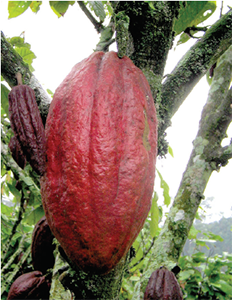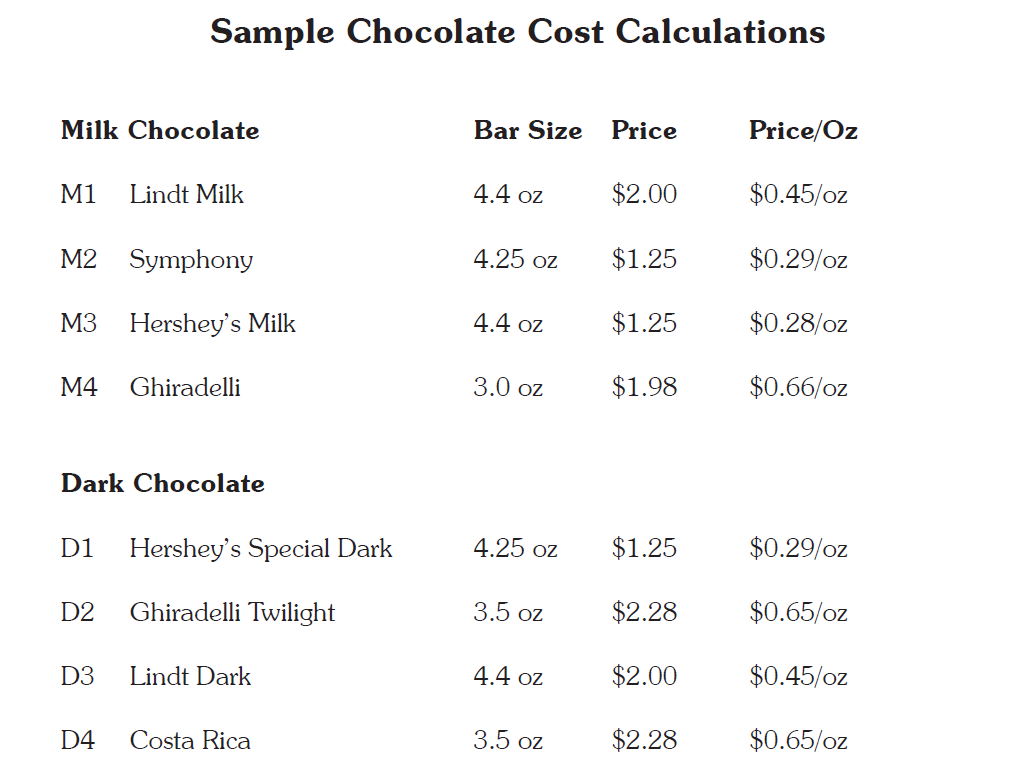Agricultural Literacy Curriculum Matrix
Companion Resource

Chocolate Taste-Testing
In this activity students will taste different types of chocolate to determine if price is an indicator of better taste. Chocolate is a New World food that is now beloved by cultures around the globe. Use this activity to engage students with lessons related to the Columbian Exchange, global trade, food ingredients, and food origins and processing.
Time to Complete
45 minutes
Materials
- 4 types of milk chocolate bars (small sample for each student)
- 4 types of dark chocolate bars (small sample for each student)
- Paper plates (dispenser for milk chocolate samples and dark chocolate samples)
- Chocolate Taste-Testing Worksheet, 1 per student
Procedures
Preparation
- Obtain enough milk chocolate and dark chocolate for each student to sample a small piece. Keep the chocolate bar wrappers—you may need these later to determine cocoa or sugar content or to view nutritional data.
- Open bars and use a knife to scrape off any identifying logo or words (e.g., Hershey). Cut samples (a half-inch square from each bar is enough) from large bars.
- Use a marker to draw four quadrants on each paper plate. Label one quadrant M1 (for milk chocolate sample 1), M2 (for milk chocolate sample 2), M3 (for milk chocolate sample 3), M4 (for milk chocolate sample 4). Mark the second plate in the same manner but label the quadrants D1, D2, D3, D4.
- Use your receipt to calculate the price per ounce for each chocolate sample.

Activity
- Review the Chocolate Taste-Testing Worksheet with students, explaining that they should use it to take notes as they sample the different types of chocolate.
- Ask students to begin tasting. You may want to have cups of water for students to drink between samples.
- Share the names, ingredients, and costs of the chocolate bars with students, and ask them to complete their worksheets.
- Explain to students that the ingredient list notes what is in the chocolate from largest to smallest quantity. If sugar is before cocoa that means the chocolate has more sugar. The chocolates’ ingredients determine taste and texture. Use the following questions to explore students' observations:
- Does the chocolate have a waxy texture?
- Does it cost more or less compared to the other chocolates?
- Does chocolate with a strong “chocolate” flavor cost more?
- Do you like sweeter chocolate?
- What costs more—chocolate with more sugar or chocolate with more cocoa?
- Do you prefer dark chocolate or prefer milk chocolate?

File, Map, or Graphic
Author
Grace Struiksma
Organization
Utah Agriculture in the Classroom
